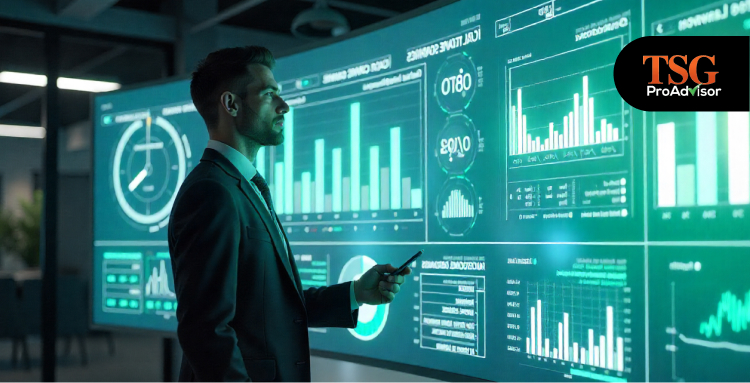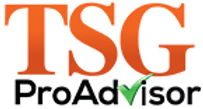Tax season does not arrive quietly, it crashes in. Finance teams scramble, inboxes overflow, and the familiar chaos of audit prep takes over. Even with spreadsheets and cloud folders, the process feels clunky, reactive, and dangerously outdated. For small and mid-sized businesses, survival often hinges on a single document or a single misclassified expense.
Meanwhile, the IRS has gone digital, moving faster and smarter with automated systems that leave little room for error. Which raises the question companies can no longer avoid. Without streamlining audit processes with tax software, are you setting yourself up to fail?
(1) The Audit Anxiety Loop
There’s a peculiar rhythm to the audit season. It starts with the scramble for documents, morphs into long nights with spreadsheets, and ends with a nervous refresh of your inbox. For many U.S. businesses, especially SMBs, audit prep still looks like it did two decades ago, which is manual, fragmented, and frustratingly inefficient.
Even with cloud drives and digital forms, the reliance on outdated systems lingers. Paper receipts still get scanned in at the last minute. Expense logs still need to be double-checked by hand. And worst of all, compliance often comes down to memory, what someone remembers entering three quarters ago.
Post-pandemic relief programs brought a wave of government funding, and with it, renewed IRS scrutiny. Audits are no longer a distant threat reserved for enterprise giants. For small teams with lean resources, the stakes are higher and the margin for error slimmer.
So why are businesses still treating audits like emergencies instead of building systems that expect them? The answer lies in how tax software is quietly transforming the game.
(2) Tax Software Is More Than Just E-Filing
Today’s tax software is doing a lot more than submitting returns. It’s reshaping the way businesses prepare for audits. These platforms are becoming intelligent systems that track, flag, and organize data in real time.
Built-in AI and machine learning tools are changing the pace. Instead of retroactively combing through transactions, software now identifies inconsistencies as they happen. It learns from patterns, reduces duplicate entries, and flags gaps long before the IRS ever notices.
More importantly, automation has replaced memory. Documentation is timestamped, categorized, and synced with every connected platform from payroll services to accounting systems and CRMs. That seamless integration is what gives teams control. Errors get caught early. Gaps close faster. And finance teams stop working in silos.
This shift reduces manual labor. It also changes what audit readiness means. The real advantage? Businesses no longer have to brace for the worst. They get to operate like the best-prepared company in the room.
And that’s where the security conversation starts to matter.
(3) What Streamlining Really Looks Like
 Streamlining an audit process means working smarter from the start. Imagine logging into a dashboard where every transaction, payroll update, and vendor invoice is already in sync. No one’s chasing down receipts. No one’s digging through folders.
Streamlining an audit process means working smarter from the start. Imagine logging into a dashboard where every transaction, payroll update, and vendor invoice is already in sync. No one’s chasing down receipts. No one’s digging through folders.
Compliance is built into the workflow. As entries are added, the system runs quiet checks in the background, flagging anything that falls outside IRS thresholds or business policy. By the time a report is generated, red flags are already handled, not discovered too late.
Audit trails aren’t something you assemble. They’re already there, which is clean, timestamped, and ready for review. Logs track who edited what, when, and why. Everything a reviewer might need is housed in one place, tied to the original source, and protected from accidental tampering.
That kind of precision saves time and changes how a business prepares for external scrutiny. Still, even the smartest system is only as strong as the security behind it.
(4) The Security Question, Are Digital Tools Really Safer?
Security is no longer just an IT issue. It’s a tax issue, an audit issue, and a trust issue. Businesses handling sensitive financial data can’t afford vulnerabilities, which is why digital tools have evolved with security baked in from the first line of code.
Today’s cloud-based tax platforms operate behind layers of encryption and authentication. Files are stored and they’re protected by real-time backups, version controls, and access protocols that limit who can see what and when. If someone logs in from an unfamiliar device, the system knows. If a file is altered, it’s tracked.
Compliance is a certification. SOC 2, GDPR alignment, and end-to-end encryption have become baseline expectations for any platform that touches financial data.The TSG Pro Advisor ecosystem meets those standards fully, on paper as well as in practice.
Ownership stays where it should, with the client. Data is never repurposed, resold, or exported without consent. Everything remains within a closed system, encrypted in transit and at rest. That control is what gives clients peace of mind during an audit or any other financial review.
Security clears the path for smarter decisions. And with the IRS adopting its own digital infrastructure, staying ahead means adapting faster.
(5) TSG Pro Advisor’s Approach to Audit Tech
With the right tools, businesses connect directly into advanced tax software. Instead of clunky add-ons, the system functions like an extra set of eyes on the finance team, spotting issues early and easing the path to compliance. The result is a workflow that’s fast, quiet, and accurate.
Through proprietary integrations tailored for U.S. regulations, TSG connects accounting tools, payroll systems, and reporting platforms into a single automated loop. No loose ends. No missed updates. Just real-time visibility with rules that match both IRS guidelines and client-specific needs.
What sets the process apart is the pairing of technology with real strategy. TSG’s advisors don’t hand over a dashboard and disappear. They study patterns, adjust processes, and train teams to use the tools for more than just audits. For one client, this approach cut their audit prep time by 75% within a single fiscal year.
The goal is clarity, consistency, and control. And with federal agencies moving toward their own AI-led review systems, the playing field is changing again.
(6) Why the IRS Is Paying Attention Too
 The IRS is going digital and changing how it enforces rules. With billions in federal funding allocated to modernize its systems, the agency is now using artificial intelligence to scan returns, flag irregularities, and prioritize audits faster than ever before. What once took weeks of manual review is now happening in minutes.
The IRS is going digital and changing how it enforces rules. With billions in federal funding allocated to modernize its systems, the agency is now using artificial intelligence to scan returns, flag irregularities, and prioritize audits faster than ever before. What once took weeks of manual review is now happening in minutes.
That shift puts new pressure on businesses. Traditional recordkeeping can’t compete with machine learning models trained to detect anomalies across thousands of data points. Staying compliant now requires the same level of tech fluency, not just to avoid penalties and to remain visible for the right reasons.
With audit selection becoming more data-driven, companies using outdated tools risk falling behind or worse, getting flagged without knowing why. The businesses that thrive will be the ones who treat transparency as an advantage, not a liability.
And that’s where audit readiness becomes more than a feature. It becomes a culture.
(7) Beyond the Numbers, A Cultural Shift in Finance
The ripple effect of streamlined audit systems goes far beyond compliance. Inside modern businesses, it’s changing how teams communicate, plan, and grow. Tax isn’t siloed anymore. Finance, operations, and even HR are starting to work from the same data environment, one where decisions are backed by clean, accessible information.
Audit readiness is becoming less about reaction and more about posture. When documentation is always up to date and accessible, the mindset shifts from fear of being caught off guard to confidence in being ready anytime. Teams spend less time firefighting and more time analyzing.
Software is driving that change, not by replacing people, on the other hand by giving them space to think strategically. With routine tasks automated and data unified, accountability becomes part of the daily workflow. Mistakes are easier to spot, trends are clearer, and strategic conversations start sooner.
This evolution is designed. And for businesses working with the right partner, it’s already reshaping the way they approach mentorship, growth, and long-term resilience.
TSG Pro Advisor’s Final Word
 Audit season doesn’t have to be a scramble. With the right tools and approach, it becomes a manageable part of your business rhythm. We see tax software not as a quick fix, but as a critical safeguard, one that builds confidence and control.
Audit season doesn’t have to be a scramble. With the right tools and approach, it becomes a manageable part of your business rhythm. We see tax software not as a quick fix, but as a critical safeguard, one that builds confidence and control.
We invite you to rethink how you prepare, organize, and respond. When technology and strategy come together, audits lose their power to disrupt.
If you’re ready to turn your next audit into a routine checkmark, contact us. Let’s make complexity a thing of the past.





